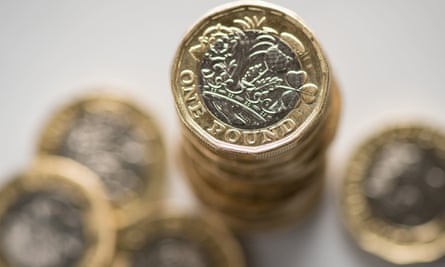Take action
Increases in interest rates mean that your savings can earn more for you than they have for many years – but only if you make sure your cash is held in the right accounts. A lot of people don’t; according to the Financial Conduct Authority, in July this year, £260bn was sitting in accounts paying 1% or less in interest. “Don’t just accept what your high street bank is offering,” says Anna Bowes, the co-founder of Savings Champion. Instead, take action to get the most from your money.
Keep some ready cash
“When you’re working age, you should aim to have cash to cover three to six months’ worth of essential expenses, and when you’re retired this grows to one to three years’ worth,” says Sarah Coles, the head of personal finance at the investment platform Hargreaves Lansdown. How much you need will depend on how much you typically spend day to day, what you consider essential, your circumstances and ability to save. “This needs to be in an easy access account,” Coles says.
 View image in fullscreenThe Financial Conduct Authority said in July this year, £260bn was sitting in savings accounts paying 1% or less in interest. Photograph: Dominic Lipinski/PA
View image in fullscreenThe Financial Conduct Authority said in July this year, £260bn was sitting in savings accounts paying 1% or less in interest. Photograph: Dominic Lipinski/PA
According to Moneyfacts’ best-buy tables, top easy access rates are about 5% but headline rates often include a bonus you may never get. “One of the tricks banks will often use to get themselves on to the best-buy tables is to offer an account with restrictions. Commonly, this will include only allowing a limited number of withdrawals a year on an easy access account,” Coles says. Paragon’s Double Access Account, for example, advertises a rate of 5.15% but if you make three withdrawals within an account year, that drops to 1.50%.
The real rate you get may also be affected by how much you have saved. “Some will offer a higher rate on the first chunk of money,” Coles says. “Some demand a high minimum deposit, and some offer tiers of interest depending on how much you hold.”
Read the small print
“Big high street banks are rarely seen in any of the best-buy tables, apart from with their regular savings accounts,” Bowes says. These demand a deposit each month, usually for a fixed period. They often have eye-catching rates of interest – but they come with restrictions.
As an example, First Direct’s regular saver pays a fixed 7% for 12 months and allows deposits of between £25 and £300 a month, up to a maximum of £3,600 a year. It is only available if you open a current account, and interest is paid at the end of the 12 months. After that, the money moves to a lower-paying account.
Interest is calculated daily, so you only earn 7% on the money that is there from the start, not what you hold at the end of the 12 months. If you were to pay in the maximum of £300 a month, ending up with £3,600 in the account, you would earn about £136.50 in interest. If you need to access the cash during the fixed term, you must close the account, and only receive the standard savings account rate (currently 2%).
Nationwide pays 8% (although this is variable) on its 12-month regular savings account, again, open to current account holders only. It allows deposits of up to £200 a month and unlike First Direct, allows unlimited withdrawals – but if you make more than four, you will receive a lower interest rate of 2.15% for the rest of the term.
 View image in fullscreenHave you stuck with a regular savings account for years without looking at the options available?
View image in fullscreenHave you stuck with a regular savings account for years without looking at the options available?
Photograph: BrianAJackson/Getty Images/iStockphoto
Only lock up what you don’t need to access
Fixed-rate bonds tie up your money for a set amount of time and offer a guaranteed rate of interest. They are particularly useful for relatively foreseeable expenses, Coles says, such as a wedding or home improvements.
Currently, there is not a huge difference between rates on fixed and easy access accounts, since banks are anticipating lower interest rates. According to Moneyfacts, there are a number of accounts around the 5.5% mark for one-year bonds, similar to today’s easy access rates, and this drops to about 4% to 5% for five-year bonds.
Given the potential for lower rates in the near future, Bowes says: “It might not be a bad idea to put some in the longer-term bond, even though it has lower interest rate than the short-term bonds. The rate could look good in comparison if interest rates have come down.”
But, she warns: “Many [fixed-term bonds] will not allow you any earlier access, even with a penalty.”
Notice accounts offer a mid-point between fixed-term and easy access accounts. Here, you agree to give a set period of notice before accessing your money. Harpenden Building Society, for example, has a 60-day notice account paying 5.15% (variable) on deposits of £1,000 or more, while Shawbrook Bank has a 120-day notice account, paying 5.25%.
See if an Isa could be nicer
You can hold up to £20,000 in a cash Isa in each financial year, with interest paid tax-free. These tax breaks were less significant when rates were at record lows but they are becoming more relevant.
The personal savings allowance means that basic-rate taxpayers can earn up to £1,000 in interest tax-free, while high-rate taxpayers can earn £500. When the best savings rates were only paying about 0.5%, you would have needed £200,000 in savings to breach the allowance. Today, with rates at more than 5%, interest on savings of £20,000 could top the £1,000 allowance.
Pay attention to the end dates of any fixed-rate accounts
If you do earn more than that, the interest will be taxed as income at the rate you would usually pay. You’ll receive your savings interest at the pre-tax rate, and if you are a PAYE taxpayer, HMRC will adjust your tax code so that you pay the correct amount. If you complete a self-assessment tax return, you should include your savings interest on there. If you earn more than £10,000 in interest, you are obliged to complete a self-assessment form.
Pay attention to the end dates of any fixed-rate accounts. “If you opt for a fixed-rate account that ties your money up for longer than a year, and have interest paid at maturity – or have monthly or annual interest paid back into that fixed-rate account, you will be taxed on all the interest in the final year,” Coles says.
 View image in fullscreenThere are platforms that offer access to multiple savings accounts through one login and dashboard. Photograph: Dominic Lipinski/PA
View image in fullscreenThere are platforms that offer access to multiple savings accounts through one login and dashboard. Photograph: Dominic Lipinski/PA
Check out the platforms
There are a range of savings platforms on the market, including Hargreaves Lansdown’s Active Savings, Savings Champion’s Savers Hub, and Raisin UK.
They offer access to multiple savings accounts through one login and dashboard.
“A cash savings platform is useful for keeping an eye on all your savings in one place,” Coles says. “They also allow you to switch between accounts with different banks incredibly easily, so you don’t end up stuck in an unrewarding account because you can’t face the paperwork.”
Some platforms have more partner banks than others, potentially offering a wider spread of accounts and rates, and some charge savers (typically up to 0.25% of their savings pot) while others charge the banks, so compare the offers before making a choice.
Assuming you don’t hold more than the £85,000 limit with one provider through the platform, your money will be protected by the Financial Services Compensation Scheme.
All rates correct at time of writing




